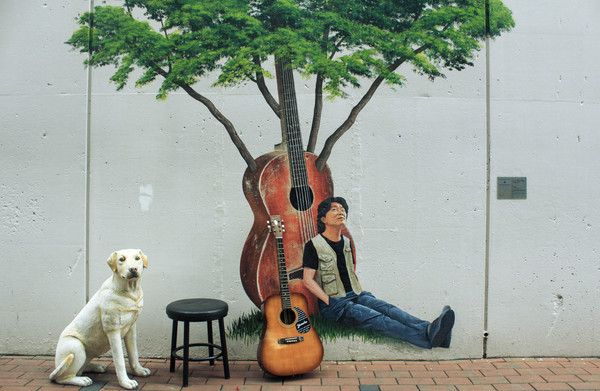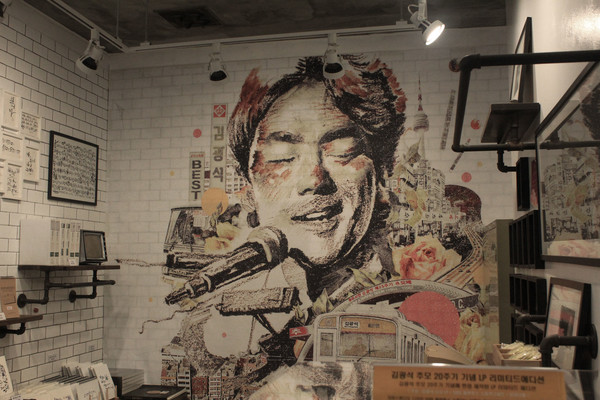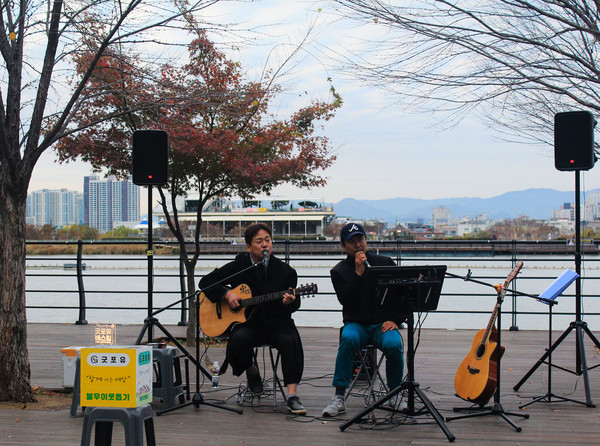A journey through Daegu’s music culture
AS THE temperature is transitioning to winter weather, I found myself struggling to enjoy the crisp outdoor air. At the same time, I came to discover that Daegu, a city famous for its relatively warmer weather, boasts an affluent musical culture. The city was selected as United Nations Educational, Scientific and Cultural Organization (UNESCO) Creative City of Music in 2017, even hosting an international opera festival featuring colorful opera music and collaborations with local artists[1]. Looking to escape from Seoul’s cold weather and with a curiosity about the music culture of a distant city, I decided to take a short one-day trip to seek the charm of Daegu.

Auditory thrill in Dongseong-ro
My journey began in Dongseong-ro, the central street of Daegu filled with bustling pedestrians and stores. In a historical context, Daegu was the birthplace of contemporary music in Korea; the first piano in Korea was introduced in the city[2]. This moment led to a rapid advancement in Daegu’s music culture, with skilled musicians from all around the country gathering in the city to interact with each other.
The antique vinyl bars standing in the corners of Dongseong-ro therefore represent a legacy of more than 50 years of musical creation and innovation. Among the variety of spots, Nok-hyang contains plentiful memories and promotes this culture as the first and oldest vinyl bar in Korea[3]. Now part of the Hyangchon Cultural Center, where remnants of Daegu’s history are displayed, the venue offers traces of the past and various music programs such as local concerts that any citizen can enjoy[3].
A staircase hidden amidst dim lights and silence led to Nok-hyang, which was on the basement floor of the center. Although my visit took place not long past the opening hour, the space was already filled with a tranquil air that harmonized with the murmuring lyrics of classical music. The venue was somewhat different from the common concept of vinyl bars, which are typically open spaces filled with displays full of antique vinyl discs. In contrast, at Nok-hyang, a DJ booth is set in transparent glass walls, resembling the view of a radio show with an open audience. The rooms were filled with various materials from decades-old phonographs to autographs of celebrated musicians, showing Nok-hyang’s legacy.
One unique space in particular captured my attention. A door on one side of the center led to a pitch-black room resembling a cinema. Consisting of a stage at the front and ascending seating, two large speakers were delivering the melody of classical music selected by the DJ. It is a space where people can enjoy the music without any distractions, effectively creating a sound theater. The antique and extraordinary experience provides a glimpse of how the initial vinyl bars were different from the common venues we find today.

Feel the legacy at Kim Kwang-seok Memorial Mural Street
Part of Daegu’s musical legacy is being the birthplace of the legendary musician Kim Kwang-seok. Born in the suburbs of the city, Kim was celebrated as the creator of the Korean folk boom in the 1990s, delivering stories through music that any Korean can connect with, regardless of time or locality. Although his life ended in a tragic suicide at the age of 31, Kim is still remembered and celebrated by many generations. Many of his songs, such as “Although I Loved You,” “A Letter from the Private,” and “In the Spirit of Forgetting,” are beloved for their poetic lyrics and heart-touching melodies and present a sense of deep nostalgia to their listeners.

A street near his birthplace was designated in 2010 as a space to commemorate Kim’s legacy[4]. Titled the Kim Kwang-seok Memorial Mural Street, the 350 m road showcases walls decorated with portraits of the artist along with various restaurants and cafes. The venue names often include quotes from lyrics and titles of Kim’s songs and harmonize with the colorful paintings to create a reminiscent yet vibrant atmosphere.
Upon entering the street, the sentimental melody of Kim’s music greeted me. Murals visually portraying his lyrics—a young couple sweetly holding hands, an innocent soldier taking a train towards a training camp, a breeze gently blowing over a green hill—blended with the music to represent the songs for both my eyes and ears. The peaceful and artistic atmosphere reminded me of the gentle melodies in Kim’s famous song “The Place Where the Wind Blows.”
As I reached the end of the street, I came across a two-story building named Kim Kwang-seok Story House. The administrator of the house kindly welcomed me, proudly explaining that the facility is open for the public to visit and functions as a commemorative hall. Just as he expressed, the space was a fascination. A timeline of Kim’s life was provided through vivid photographs and commentaries, displaying rare moments from his early years to his radio broadcasts. Concert footage and audio were offered through headphones and a wax figure of Kim in photo spots were all greatly entertaining and educational. The small yet impactful commemoration house, along with the beautiful street passage provided a passionate tribute.


Find musical inspiration at Suseongmot Lake
The final venue I visited was Suseongmot Lake, one of the most popular resting spots in the city. Located south of central Daegu, the vast lake offers a sense of relaxation amongst the crowded urban surroundings. Along the trails that surround the lakeside, four large stages installed for busking performances provide passers-by with entertaining music concerts and magic shows.
The lake was much more spacious than what I expected. The opposite shore stretched out into the horizon, with verdant mountains serving as a backdrop. The calm air was filled with echoes of music from busking artists and nearby stores. Such an auditory sensation created a sentimental atmosphere, adding serenity to the lake view.

Amongst the various features the lake provided, what caught my attention the most was the vibrance of the busking occurring along the shore. The music was grand enough to be heard from far away and groups of people gathered around to appreciate the concert. Different types of artists were expressing their musical talents. Two men seemingly in their forties passionately sang old Korean folk songs, the sound of their guitars and harmonious voices inspiring awe. A young man sitting on a bench gently practiced his ocarina, causing pedestrians to slow down and spectate. A group of young people shyly sang to the accompaniment of instruments. This scenery, mixed with the placid waves of the lake, built a romantic ambience.
* * *
Despite the 30,000 footsteps recorded in my health application by the end of my trip, I surprisingly felt no exhaustion while returning home. The musical inspiration and sensations provided me with a valuable experience that will be remembered for a long time. An escape from the mundane, cold winter to the warmth of Daegu was a great opportunity to excavate the hidden musical gem of the city.
[1] NoCut News
[2] Kyungbuk Daily
[3] Travel Sketch
[4] Korea Tourism Organization
[5] Suseong-gu Official Homepage

